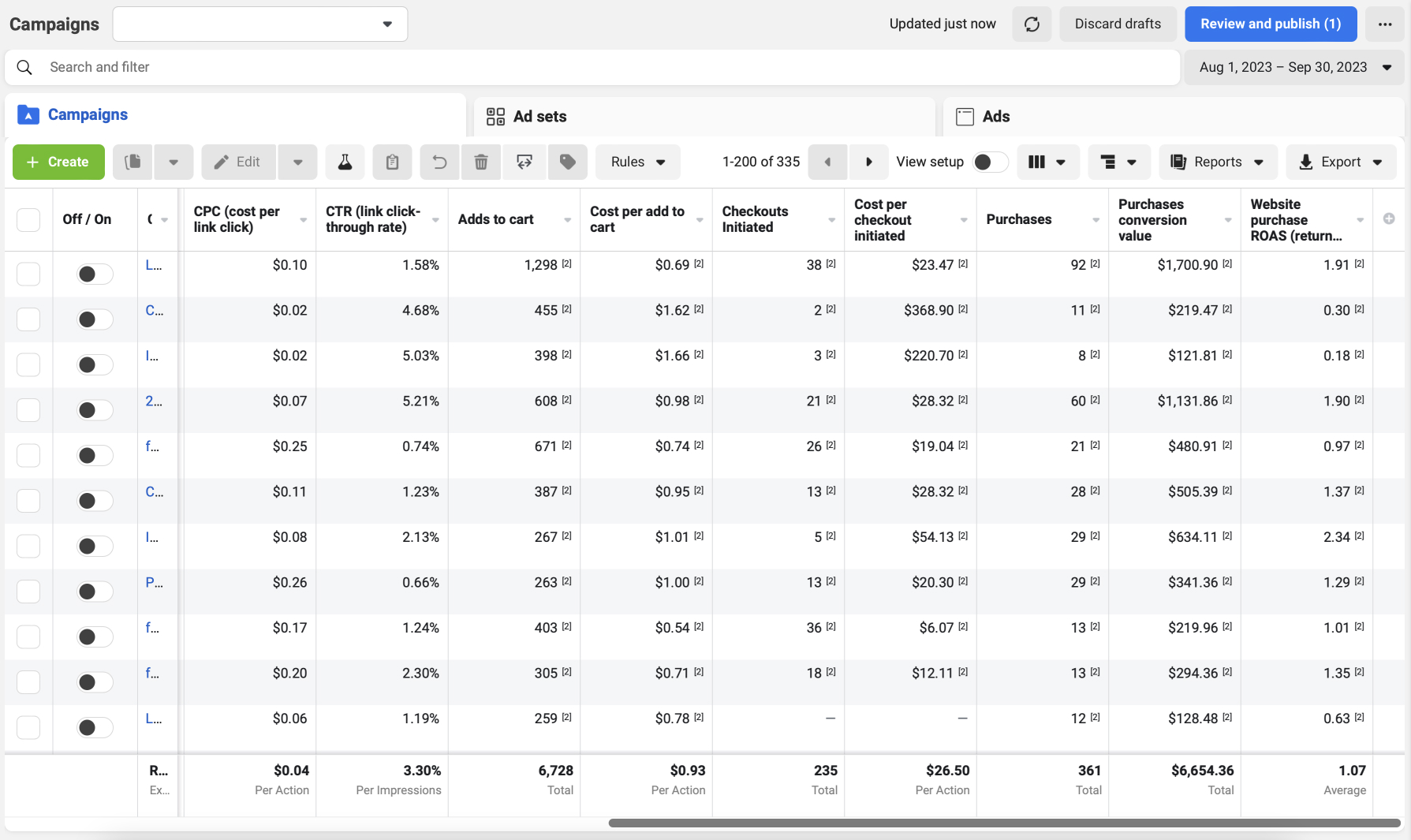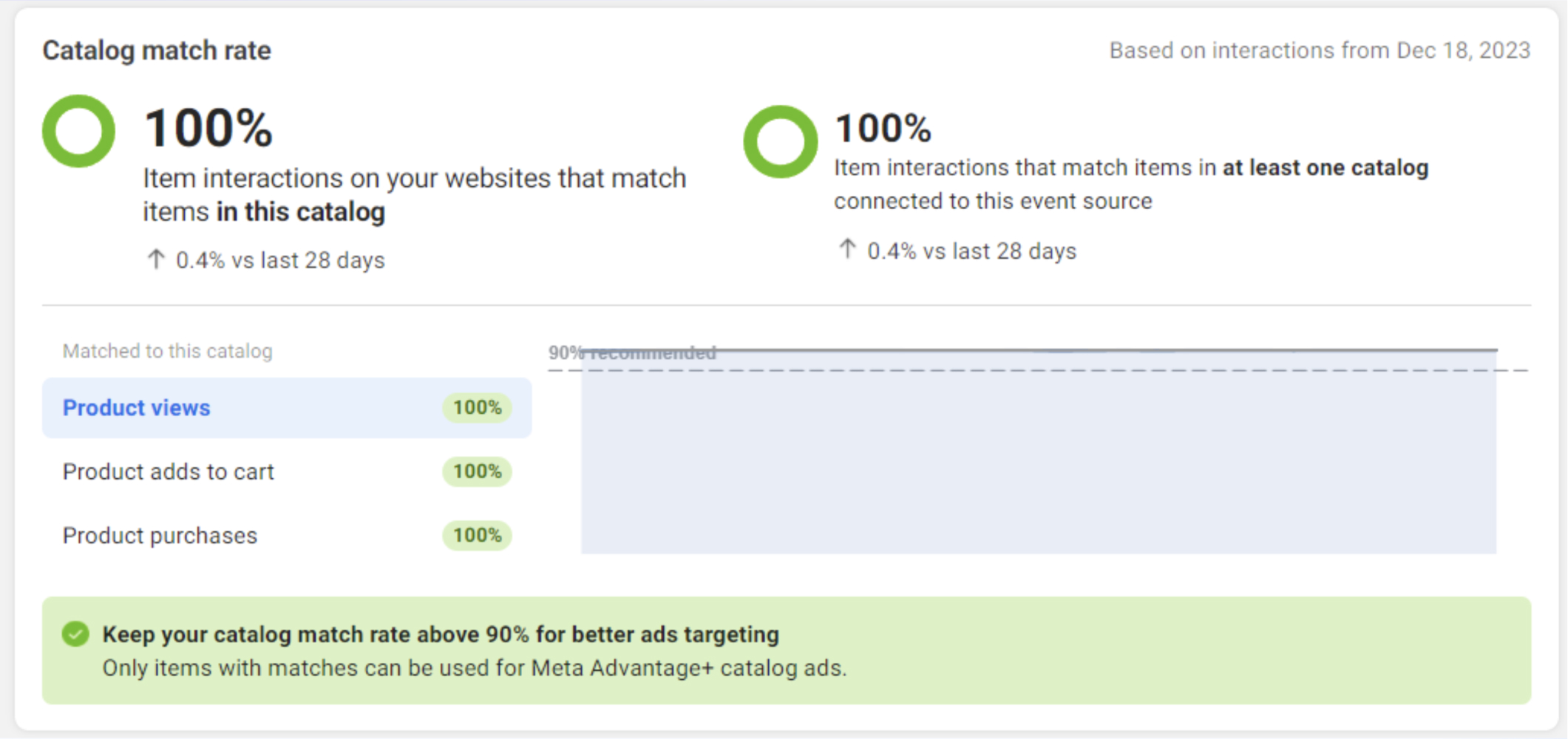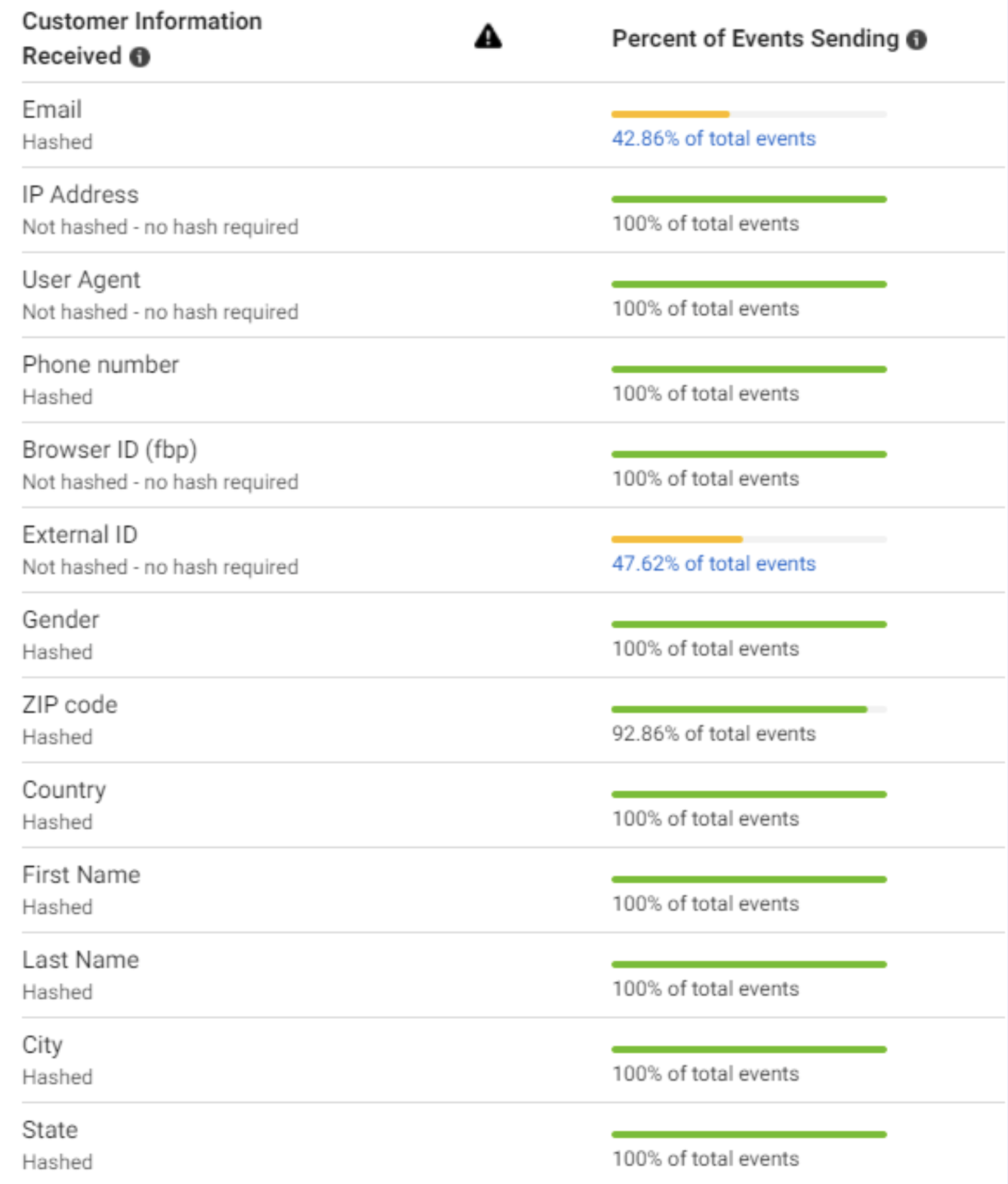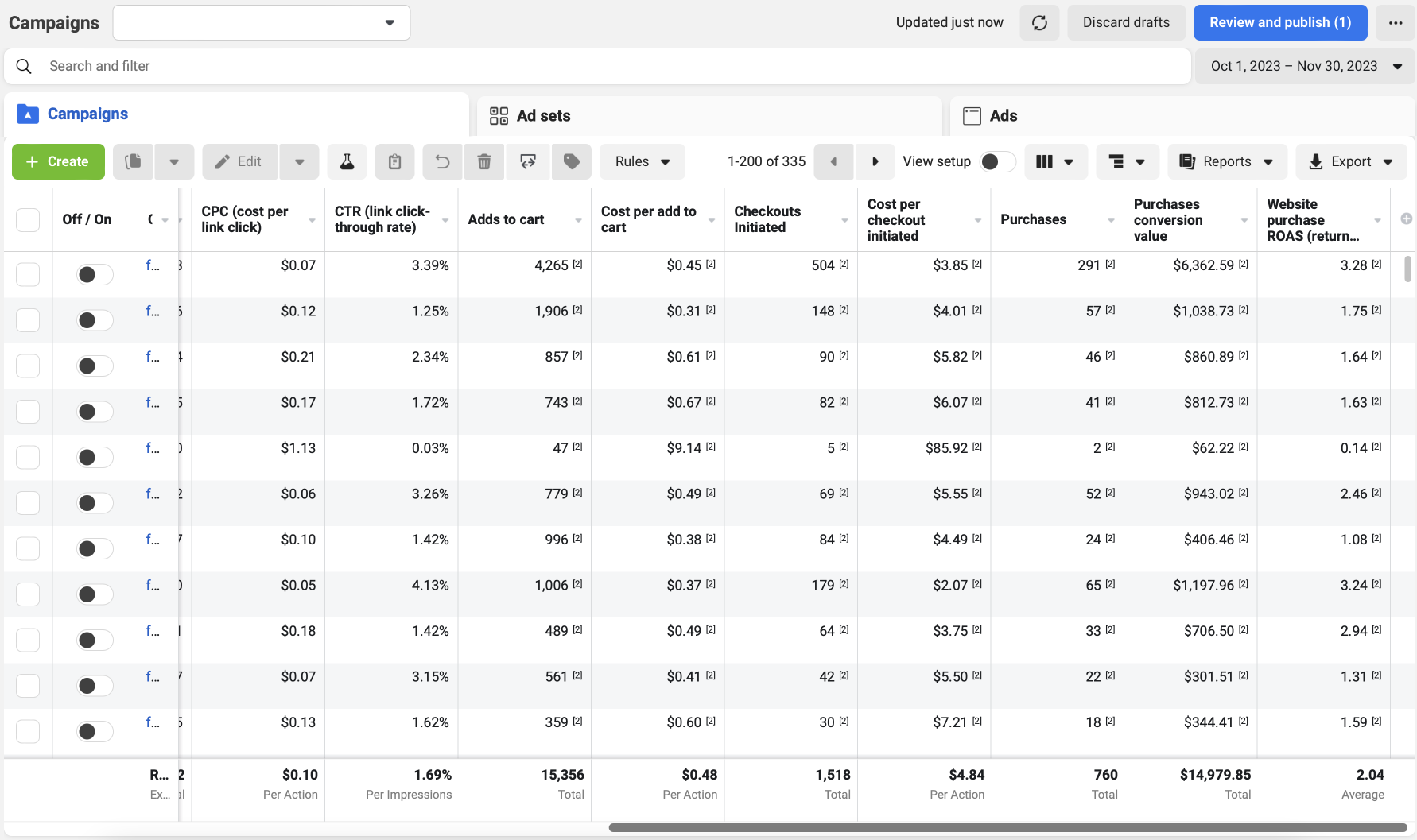So, picture this: there’s this fantastic online store where you can find all sorts of awesome accessories for the ladies. This place is a treasure trove for fashion lovers, from funky jewelry to stylish handbags.
So, here’s the deal: when we first teamed up with this rad accessories boutique, they were all about ramping up their profits through Facebook ads. Their big dream? Aim for a Return on Advertising Spend (ROAS) of 2+ to make their advertising bucks work harder.
Step 1: Challenges at the Beginning of the Project
Here are the key metrics from the Facebook Ads Manager before our agency’s intervention:
- Initial Revenue: $6,654
- Total Number of Orders: 361
- CPA (Cost Per Acquisition): $17.25
- ROAS (Return on Advertising Spend): 1.07
These metrics provide a snapshot of the performance of the Facebook advertising campaigns in August and September 2023 before our agency began working with the client.
Let’s dive into how we teamed up with this boutique to work some marketing magic and help them level up their game online. It’s a story of challenges, triumphs, and stylish success.

Step 2: Defining Objectives: Setting Key Targets for Campaign Success
To achieve our goals, we focused on leveraging Facebook as the primary advertising channel to enhance the online boutique’s performance.
Our main objectives were to:
- Decrease the cost per conversion by 40% through optimized targeting and campaign structures.
- Increase the average order value by implementing upselling and cross-selling strategies.
- Elevate the Return on Advertising Spend (ROAS) to 2.5 by refining ad targeting and monitoring campaign performance.
Our strategy aimed to drive efficiency, maximize Revenue, and optimize profitability through strategic Facebook advertising, aligning with the boutique’s growth trajectory in the digital commerce landscape.
Step 3: Identifying Key Challenges: Overcoming Hurdles in Project
1. Technical Configuration Challenges: The project faced significant hurdles related to the technical configurations of the catalog and product card parameters transmitted to the Commerce Manager. This issue was particularly critical when implementing trade campaigns and Advantage+ campaigns. The complexities arose from discrepancies in data transmission, leading to inconsistencies in product information display and campaign execution. Addressing these technical intricacies required meticulous troubleshooting and collaboration between our team and the platform’s technical support to ensure seamless integration and functionality.
2. Limitations in Event Tracking: The project encountered challenges associated with limited event tracking capabilities due to Apple’s privacy policy changes. With the implementation of iOS 14 and subsequent updates, the ability to track user interactions and behavior across platforms became increasingly restricted, significantly impacting the effectiveness of our campaign optimization efforts. The constraints posed by these privacy regulations necessitated a reevaluation of our tracking methodologies and optimization strategies to adapt to the evolving digital landscape while maintaining compliance with privacy standards.
Navigating through these challenges demanded innovative solutions, proactive problem-solving, and adaptive strategies to mitigate their impact on campaign performance and overall project success. In the subsequent sections of this case study, we will explore in detail the specific strategies and tactics employed to overcome these obstacles and achieve remarkable results for our client.
Step 4: Strategies and Approaches. Driving Performance Enhancement
To achieve our objectives, we implemented the following strategies:
- Configuration of Cross-Server Event Tracking: We enhanced event quality in Meta Events Manager by configuring cross-server event tracking. This allowed us to track additional micro-conversions and improve overall tracking accuracy.

- Optimization of Catalog and Product Cards: We focused on populating product cards with essential and additional parameters, such as user country, city, postal code, email, and gender. Continuous monitoring and error correction were integral to maintaining data accuracy.

- Active Utilization of Advantage+ Campaigns: Leveraging the insights gained from event tracking and catalog optimization, we actively utilized Advantage+ campaigns. With sufficient data, Facebook’s artificial intelligence effectively determined target audiences and rapidly adapted campaign strategies.
- Increasing Average Order Value: Recognizing the challenge posed by accessories’ relatively low price points, we implemented various strategies to boost average order value:
-
- Implementation of a minimum purchase amount on the website.
- Usage of landing pages with product filters, prioritizing higher-priced items.
- Testing product catalogs with items priced at 300 and 500 UAH.
- Exclusion of ineffective sections and cheap products from the catalog.
- Active Creative Optimization: We continuously worked on creatives and utilized informative drives to engage our audience effectively. This included regular updates and testing of various creative formats (static and video), covering seasonal sales, new collections, and event-specific promotions like Halloween, Black Friday, and Christmas.
- Strategic Remarketing: Given the substantial site traffic, remarketing was pivotal. We developed various audience segmentation strategies and tested different remarketing approaches, including regular remarketing, dynamic remarketing, remarketing in Advantage+ campaigns, and customer-based remarketing.
These strategies formed the backbone of our approach, enabling us to overcome challenges and drive significant improvements in campaign performance and overall results.
Final: Outcomes and Results: Impact of Strategic Initiatives

With Facebook Ads (Meta Ads) as the primary source of website traffic, we witnessed a substantial enhancement in in-store profitability and purchase volumes. Comparing the periods of August & September 2023 and October & November 2023, the store achieved remarkable results:
1. Average Number of Orders:
– Increased from 1127 to 2136, indicating a significant surge in customer transactions and engagement.
2. Average Order Value:
– Grew from $5 to $20, showcasing an impressive boost in the value of each customer transaction.
3. Generated Revenue:
– Increased from $19,626 to $42,959, reflecting a substantial rise in overall revenue generation and business growth.
These results underscore the effectiveness of our strategic initiatives and the successful implementation of targeted approaches aimed at enhancing key performance metrics. Through continuous optimization and proactive adaptation, we were able to drive tangible improvements in in-store performance, positioning our client for sustained success in the competitive landscape of e-commerce.
Stay tuned for more exciting case studies and success stories from our digital marketing endeavors!

 Amazon Marketing
Amazon Marketing


